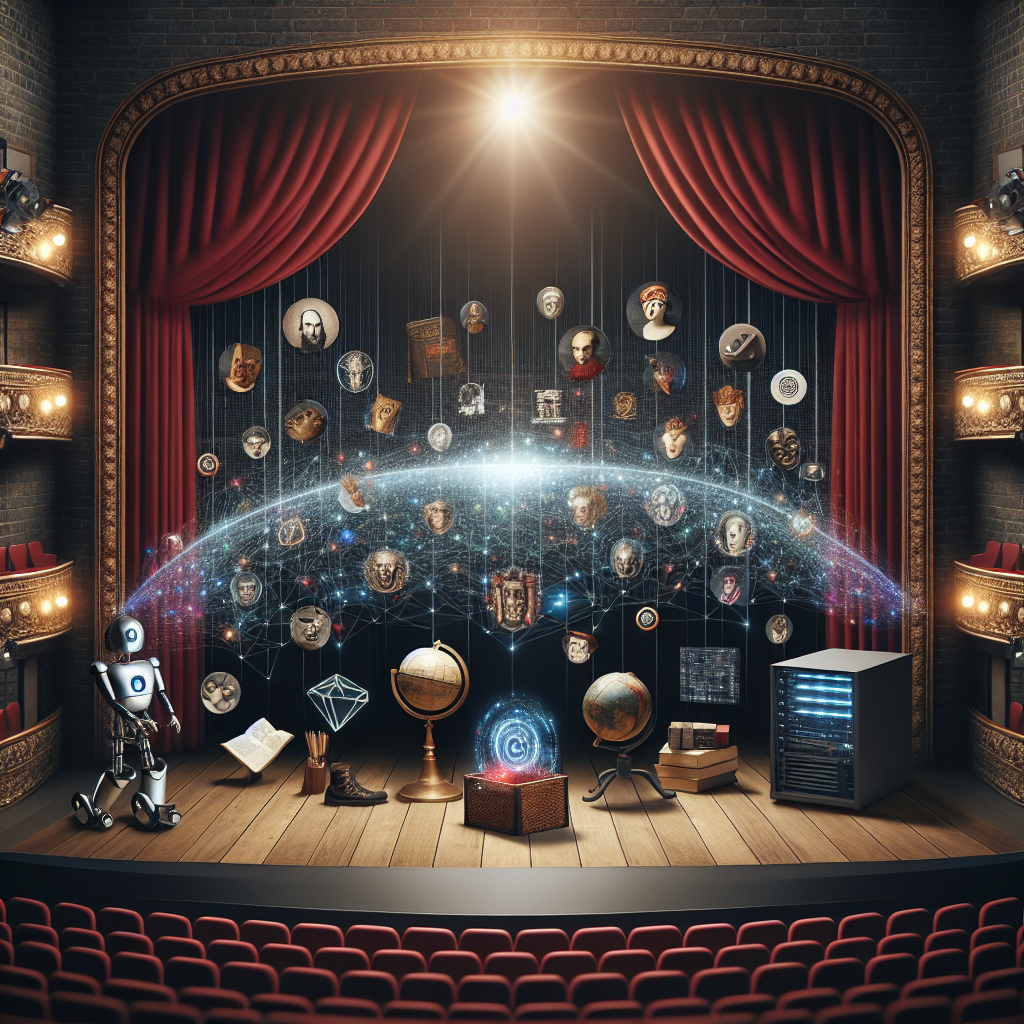The Future of AI in Theatre: How Technology is Changing the Stage
Artificial intelligence (AI) is rapidly transforming industries across the globe, and the world of theatre is no exception. From enhancing the creative process to revolutionizing audience engagement, AI is poised to have a significant impact on the stage of the future. In this article, we will explore how technology is changing the theatre industry, the benefits and challenges of incorporating AI into performances, and what the future may hold for this exciting intersection of art and technology.
The Rise of AI in Theatre
The use of AI in theatre is not a new phenomenon, but recent advancements in technology have opened up new possibilities for creatives to explore. One of the most prominent ways AI is being used in theatre is through the creation of virtual characters. These digital performers can be programmed to interact with live actors in real-time, creating dynamic and engaging performances that blur the lines between reality and fiction.
Another area where AI is making waves in the theatre industry is in the realm of set design and production. AI algorithms can analyze data from past productions to help designers create more efficient and visually stunning sets. This can save time and money, as well as push the boundaries of what is possible on stage.
Additionally, AI is being used to enhance audience engagement through personalized experiences. Chatbots and virtual assistants can interact with audience members before, during, and after performances, providing information, answering questions, and creating a more immersive experience for theatergoers.
Benefits of AI in Theatre
There are a number of benefits to incorporating AI into theatre productions. One of the most obvious advantages is the ability to create more visually stunning and technically complex performances. AI can help designers and directors push the boundaries of what is possible on stage, creating immersive and unforgettable experiences for audiences.
AI can also help streamline the creative process, allowing artists to focus on the artistic elements of their work while leaving the technical details to the machines. This can save time and money, as well as reduce the potential for human error.
Furthermore, AI can help theaters reach new audiences and engage with existing ones in new and innovative ways. By creating personalized experiences for theatergoers, AI can help foster a sense of community and connection among audience members, leading to a more enriching and rewarding experience for all involved.
Challenges of AI in Theatre
While the benefits of AI in theatre are clear, there are also challenges that must be addressed. One of the main concerns surrounding the use of AI in the arts is the potential for job displacement. As AI becomes more prevalent in the industry, there is the risk that human actors, designers, and technicians may be replaced by machines, leading to job loss and economic uncertainty.
Another challenge is the potential for AI to homogenize artistic expression. As AI algorithms become more sophisticated, there is the risk that all performances will start to look and sound the same, leading to a loss of diversity and creativity in the industry.
Additionally, there are ethical concerns surrounding the use of AI in theatre, particularly in terms of data privacy and security. As theaters collect more information about their audiences in order to create personalized experiences, there is the risk that this data could be misused or exploited, leading to breaches of trust and potential legal issues.
The Future of AI in Theatre
Despite these challenges, the future of AI in theatre is bright. As technology continues to evolve, so too will the ways in which AI is used in the industry. From creating virtual reality experiences to enhancing audience participation, the possibilities for AI in theatre are endless.
One exciting development on the horizon is the use of AI to create interactive performances that respond in real-time to audience input. Imagine a play where the audience’s reactions and emotions dictate the direction of the story, creating a truly unique and personalized experience for each individual.
Another area where AI is likely to have a significant impact is in the realm of accessibility. By creating virtual assistants and chatbots that can provide information and support to audience members with disabilities, theaters can ensure that everyone has the opportunity to enjoy the magic of live performance.
FAQs
Q: Will AI replace human actors in the future?
A: While AI has the potential to enhance performances and create new opportunities for creativity, it is unlikely that human actors will be replaced entirely. The unique emotional depth and nuance that human performers bring to the stage cannot be replicated by machines.
Q: How can AI enhance audience engagement in theatre?
A: AI can enhance audience engagement in a number of ways, including creating personalized experiences, providing information and support, and creating interactive performances that respond to audience input.
Q: What are the ethical concerns surrounding the use of AI in theatre?
A: Ethical concerns surrounding the use of AI in theatre include data privacy and security, the potential for job displacement, and the risk of homogenizing artistic expression. It is important for theaters to address these concerns and ensure that AI is used in a responsible and ethical manner.
In conclusion, the future of AI in theatre is full of exciting possibilities. From creating virtual characters to enhancing audience engagement, AI is poised to revolutionize the way we experience live performance. By addressing the challenges and ethical concerns surrounding the use of AI in theatre, we can ensure that this technology enhances, rather than detracts from, the magic of the stage.

